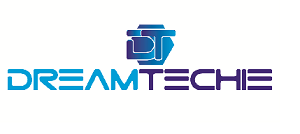Remember the time that you used your five-year old laptop and then switched over to a present-day model? Laptops have evolved rapidly over a short period of time and are continuing to do so. Despite increasing sales of tablets and smartphones, the demand for laptops is also increasing at a steady rate. If you’ve wondered what the current trends are in laptops, read on. Listed below are the top 5 trends in laptops in 2013.
Fujitsu’s Palm Vein Authentication
Fujitsu recently launched the Celsius H730, which offers palm vein authentication security to its users. If you’re wondering what’s palm vein authentication, there’s nothing much to it, although it offers very high security to its users. The palm vein sensor utilizes image recognition and optical technology for scanning the palm, without the users having to touch the laptop.
PalmSecure tech, which comes bundled with the laptop, will irradiate the hand with almost-infrared rays, which are assimilated by the deoxidized hemoglobin present in the blood, which makes the veins appear black. A user will simply need to move their hand across the device, which will pick-up the pattern and compare it with the pre-registered vein model already set.
Also Read – Things To Look For When Buying A Gaming Laptop
The company claims to have a low false acceptance rate of a meager 0.00008 per cent, citing its security authentication method impossible to forge.
Swivel Screen Laptops
Swivel screen laptops are the ‘in’ thing in the world of laptop technology. With swivel top designs, you can convert your work laptop into a tablet to chill out after a hard day’s work. The Swivel screen on HP EliteBook Resolve is a fine example of the swivel screen technology.
All you need to do is twist the screen on the swivel and flip it down for it to transform into a touchscreen tablet. The swivel screen on HP Elitebook Resolve comprises just one point of contact between both parts of the laptop, but it’s very sturdy.
Despite the presence of Swivel screen on HP EliteBook Resolve, this laptop is priced moderately at INR 90,000.
Ultra-Thin And Light Laptops
It can’t be denied that people require computers on an everyday basis to get their jobs done. However, in most cases, you wouldn’t need the processor power that is available in desktop computers. Ultrabooks are designed to make life convenient for users, by providing enough power to handle common tasks. Intel was the first to coin the term Ultrabook, and it entails laptops with certain specifications that set them apart from other ultraportable laptops.
Ultrabook laptops come with Intel Core i3, Core i5, and Core i7 processors, USB 3.0 connectivity, and quick SSD storage. Most ultrabooks are priced very moderately, in the range of INR 30,000 to 50,000. These ultrabooks weigh around 1.5 kg, which is much less in comparison to full-fledged laptops.
Some of the best ultrabooks in the market include the Lenovo IdeaPad U410 Touch, the Toshiba Satellite Z930, the Dell XPS 13, the Samsung ATIV Book 9 Plus, and the Asus Zenbook Prime UX31A.
Gesture Control
Gesture Control is now a trend in the laptop world, which allows you to control your laptop by sweeping your hand across. The HP Envy 17 Leap Motion SE is one such laptop that comes with a special sensor from Leap Motion, which is a firm based in San Fransisco. Leap motion technology tracks an individual’s fingers as it’s moved around the screen.
Despite the fact that Leap Motion was initially available as an add-on for laptops, HP has now implemented it in this laptop. The small sensor is present just below the keyboard and utilizes two cameras and three infrared LEDs to trace an object’s movement. Users can even grasp a pencil and the PC will be able to trace the fingers.
Also Read – 5 Betterments to Be Made on Apple’s MacBook Air
Ron Coughlin, HP Consumer PC and Service Group’s Senior Vice President, stated that the team at Leap Motion has designed stunning technology that has completely revolutionized the way users interact with digital media. The price of the HP Envy17 Leap Motion SE is INR 43,500.
NFC (Near Field Communication)
NFC, also known as Near Field Communication, comes with a number of portable devices currently. NFC allows two devices, which could also be laptops, to connect via peer-to-peer radio communications, sending data to each other by touching them together or placing them close. NFC is similar to Wi-Fi and Bluetooth, but it can be used for inducing electric currents within passive parts, apart from just sending data. NFC is also much faster than Bluetooth, in terms of file transfer.
The year 2013 has been a defining period in the laptop world, in terms of stunning hardware and software. The future of laptops is indeed bright, with several hardware advancements taking place rapidly in these recent times.


